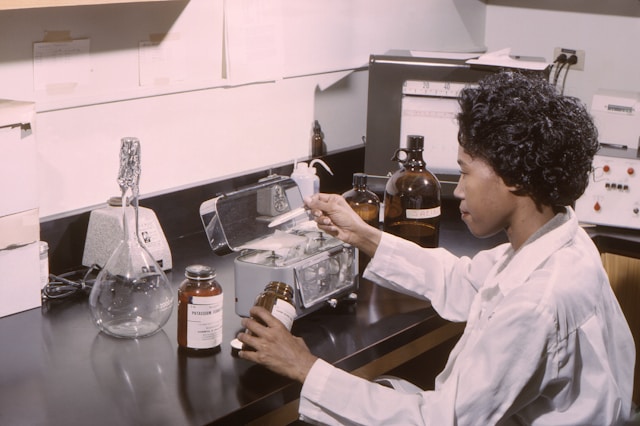GMP Cold Room Checklist: 5 Practical Steps for Compliance

Introduction
Cold rooms are critical infrastructure in pharmaceutical facilities — storing vaccines, APIs, biologics, and temperature-sensitive materials. GMP (Good Manufacturing Practices) compliance requires routine checks, documentation, and preventive maintenance to ensure consistent environmental control.
This blog provides a practical GMP cold room checklist to help facility managers and quality teams stay audit-ready and prevent storage-related failures.
Why a Cold Room Checklist Matters
- Cold room failures can lead to product spoilage, costly recalls, and regulatory action.
- Auditors expect documented evidence of regular checks, alarms, calibrations, and maintenance.
- A structured checklist ensures nothing is missed and helps your team follow a standard operating procedure.
🗓️ Daily GMP Cold Room Checklist
| Task | Purpose |
|---|---|
| Record internal temperature and humidity | Ensure cold chain integrity (2–8°C range) |
| Verify probe readings match external monitors | Prevent sensor failure or drift |
| Check for ice buildup near door seals and vents | Avoid insulation or airflow issues |
| Test alarm systems (audible/visual alerts) | Immediate response to deviation |
| Inspect for any visible water leakage or condensation | Prevent mold and temperature fluctuations |
| Ensure access logs are updated | Track personnel entry and exit |
| Sign off with date/time and technician initials | Maintain audit-ready traceability |
📅 Weekly GMP Cold Room Checklist
| Task | Purpose |
|---|---|
| Clean and inspect evaporator and condenser coils | Improve efficiency, avoid frost |
| Check fan motors, belts, and airflow | Prevent mechanical wear and poor circulation |
| Inspect electrical panels and breakers | Ensure safety and stable performance |
| Review alarm history for recent alerts | Identify patterns or recurring issues |
| Verify condition of door gaskets and hinges | Maintain air seal and efficiency |
| Confirm calibration labels are visible and not expired | Support GMP audit readiness |
🗓️ Monthly GMP Cold Room Checklist
| Task | Purpose |
|---|---|
| Calibrate all temperature probes and data loggers | Ensure sensor accuracy for compliance |
| Perform a deep clean of cold room walls and floor | Sanitation and microbial control |
| Test backup power systems (generators/UPS) | Prepare for unexpected outages |
| Check refrigerant pressure and compressor performance | Prevent cooling failures |
| Review and archive all checklists and PM logs | Centralize documentation for inspections |
| Inspect cold room lighting and emergency exits | Meet safety and operational standards |
📁 Documentation & Audit Readiness
- Maintain signed, timestamped records of every checklist
- Use a CMMS or digital logbook to centralize cold room data
- Link PM tasks with technician logs, asset history, and alerts
- Store backup calibration certificates and alarm test records
- Keep SOPs and GMP references accessible for audits
💡 Pro Tip: Automate with a CMMS
Using a paper checklist is better than nothing — but a CMMS like MaintBoard:
- Sends automatic task reminders
- Links tasks to specific assets
- Ensures completion tracking and accountability
- Generates audit-ready reports in seconds
- Simplifies compliance for WHO PQS and GMP audits
✅ Frequently Asked Questions
How often should a cold room be inspected in a pharma facility?
Daily checks are standard under GMP guidelines, supported by weekly and monthly preventive maintenance to ensure consistent performance and compliance.
Can a CMMS replace paper-based checklists for GMP compliance?
Yes. A CMMS provides timestamped logs, automated alerts, and centralized documentation that auditors often prefer over fragmented paper logs.
What temperature range is acceptable in a GMP cold room?
Typically 2°C to 8°C. However, specific ranges depend on the product stored. Continuous monitoring and alarm thresholds must be configured accordingly.
Is WHO PQS compliance different from GMP?
WHO PQS is specific to vaccine cold chain equipment and performance standards. GMP compliance is broader, covering pharmaceutical manufacturing and storage practices.
What’s the difference between preventive and corrective maintenance in GMP?
Preventive maintenance is scheduled and proactive — it’s done to avoid equipment failure. Corrective maintenance is reactive — it’s performed after a failure. GMP strongly emphasizes preventive maintenance to reduce risk and ensure product quality.
Who is responsible for GMP equipment maintenance documentation?
Maintenance staff typically perform the tasks, but QA teams are responsible for reviewing, verifying, and archiving the records. Both roles must follow SOPs and ensure that logs are complete, accurate, and traceable.
What are common audit findings related to GMP maintenance?
Some common findings include missing maintenance logs, overdue calibration, lack of technician signatures, undocumented deviations, and SOPs that are outdated or not followed properly. A well-maintained CMMS helps avoid these issues.
Conclusion
A GMP cold room checklist isn’t just for compliance — it’s a vital tool for protecting your inventory, preventing losses, and running a reliable pharmaceutical operation.
Use this checklist as your SOP foundation, and consider implementing a digital CMMS to simplify the process and reduce risk.
